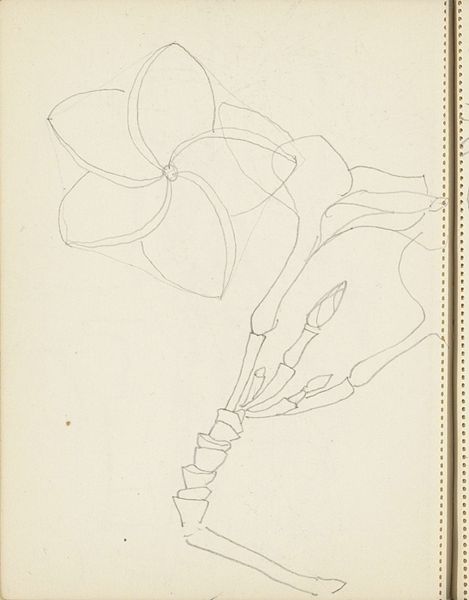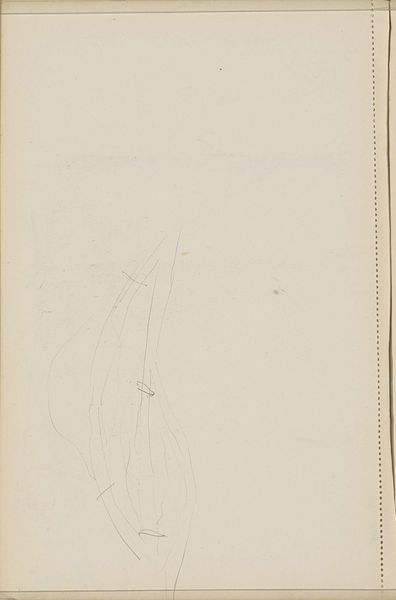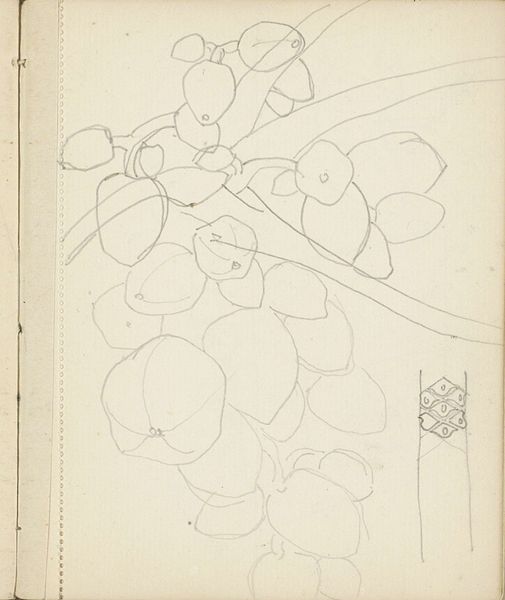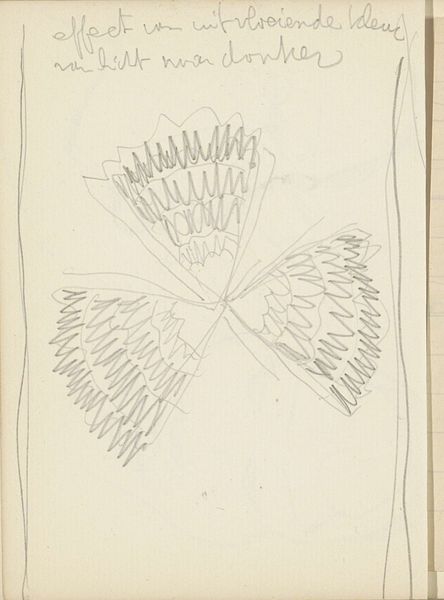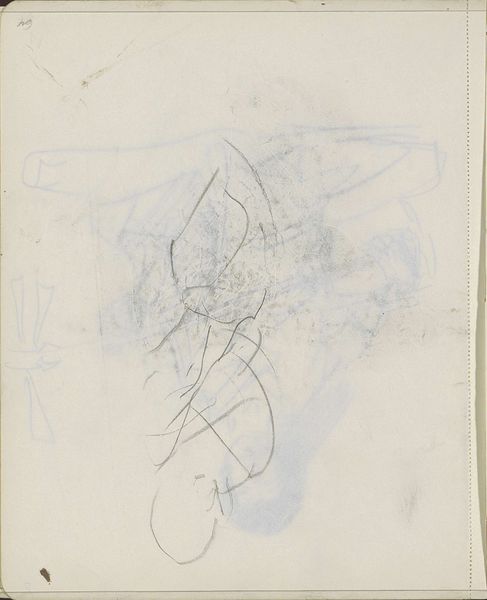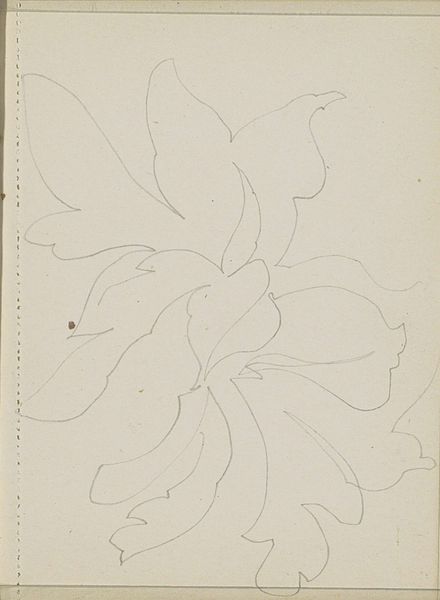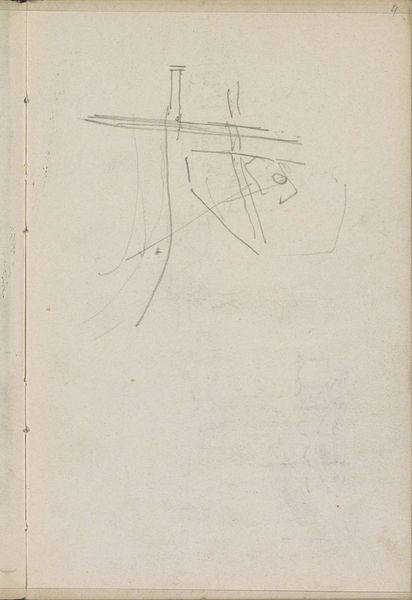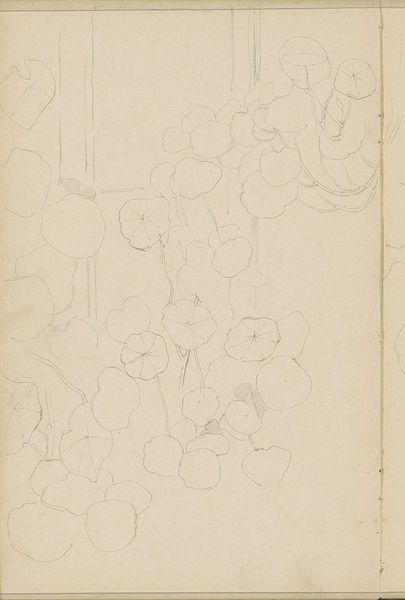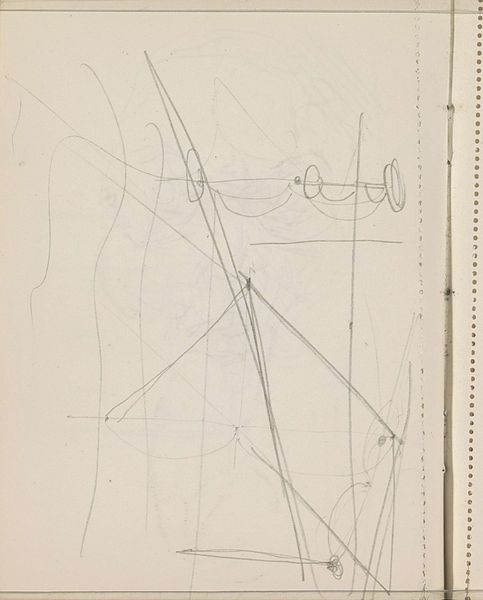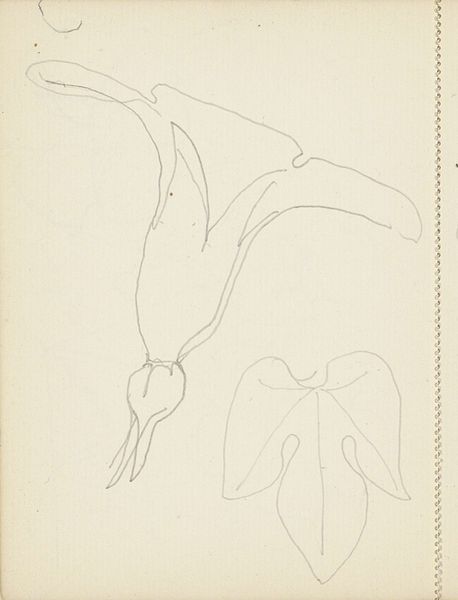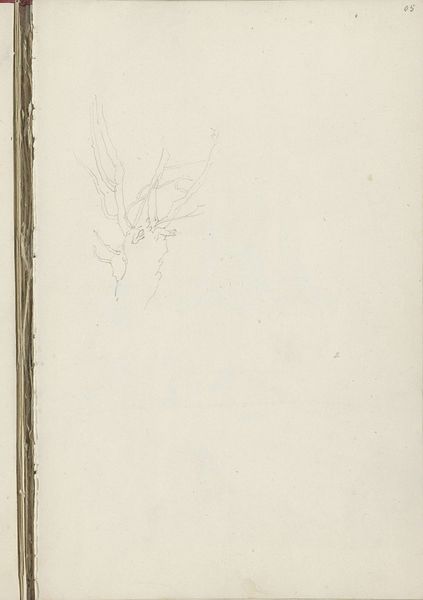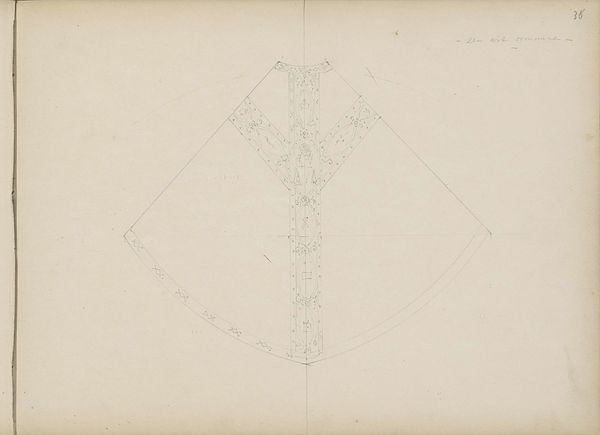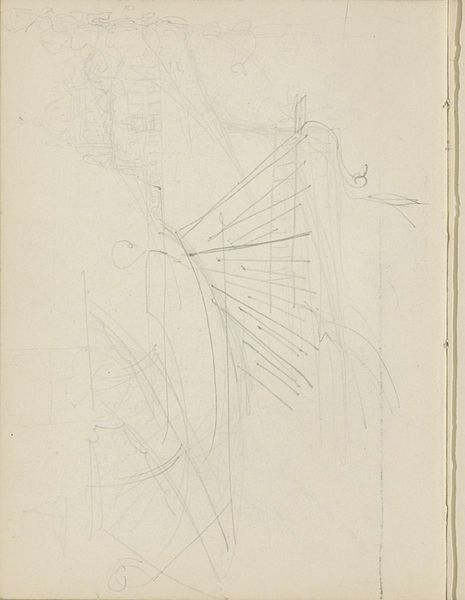
drawing, paper, pencil
#
drawing
#
organic
#
paper
#
pencil
#
abstraction
#
line
Copyright: Rijks Museum: Open Domain
Curator: Here we have "Bloem," a pencil drawing on paper by Reijer Stolk, created sometime between 1916 and 1945. Editor: It strikes me as an intimate piece, like a quiet, perhaps unfinished thought, laid bare on paper. It has the ephemeral feel of a study, but what really stays with me is how tentative each stroke is. Curator: Stolk was preoccupied with organic forms. Notice how he renders the bloom of the flower not with concrete detail, but with flowing lines and geometric shapes. Editor: The use of abstraction invites speculation. Considering the historical context, these years were rife with sociopolitical conflict. Is there perhaps a yearning here to find beauty in chaos, to reduce complexities to a simple, shared symbol? Curator: It certainly captures a sense of vulnerability through that visual language. Flowers have long symbolized everything from love and beauty to the fragility of life itself. Seeing it reduced to this simple sketch invites you to invest it with meaning. Editor: The ambiguity makes me wonder about the artist's intent. Flowers have been coded with feminine virtues like delicacy. Who are they for, and whom do they exclude? The symbol shifts over time; it’s not a pure image separate from gendered implications. Curator: The very lines feel transient. It could be interpreted as longing, but perhaps it speaks to a more radical deconstruction, stripping away expectations associated with conventional depictions. Editor: So perhaps, we see here, then, the suggestion of an icon rather than a portrait, something more personal and conceptual at once, shaped by cultural and political turbulence of the early to mid-20th century. Curator: A beautiful image, even if a whisper. I love the sense that Stolk recorded an intuitive and perhaps very human vision in those delicate strokes. Editor: Exactly, making art feel accessible because it emphasizes process. The unfinished state suggests an opening, asking us to bring our own historical weight and perspective into the frame.
Comments
No comments
Be the first to comment and join the conversation on the ultimate creative platform.
